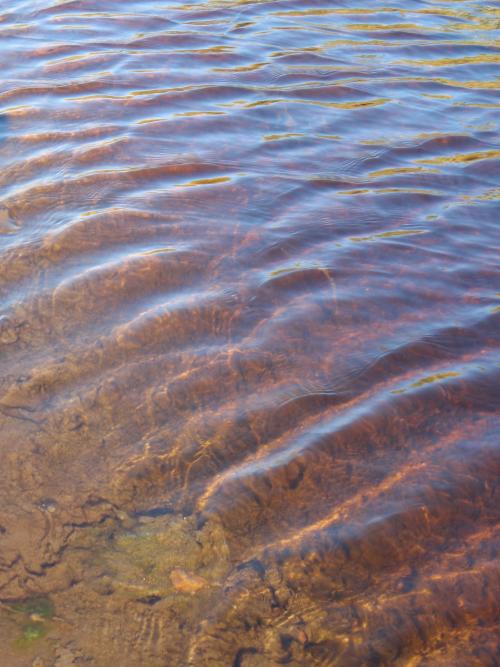The Kobuk River is surrounded by a shallow active soil horizon with little vegetation that is underlain by permafrost. Because there is limited opportunity for flows to interact with soils and associated solutes, flows from adjacent tributaries, floodplains and seepage are dominated by surface runoff and are “clean” relative to permafrost free systems with deeper active soil horizons. Permafrost effectively traps organic material at various stages of decay and has the potential to be a huge source of sediment and nutrients should it melt under climate warming.
Of the material currently flushed into the river, some is the product of decaying plant and animal tissue and of this fraction, part is bioavailable, contributing carbon, nitrogen, phosphorus and other nutrients to in-stream productivity, and part is not, contributing tannin and lignin to the river, coloring the water tea-brown, effectively reducing light penetration in the water column. Because productivity in the Kobuk, as in all rivers, depends on light to drive photosynthesis and consequently higher levels of production, the light attenuating influence of tannins is extremely important to the river ecosystem. A survey of tributaries, adjacent groundwater flow and nearby lakes contributing to the Kobuk indicates striking differences in water quality and tannin concentrations flowing into the river depending on the upstream source material, confining substrate, ground cover and flow regime of individual sources.

Moving downstream from Walker Lake along the Kobuk, there is a subtle transition from a very clear, shallow, turbidity and tannin free river, to a large, deep and somewhat tannic river. Although some of the flows entering the river are extremely tannic and nutrient rich (examples), the large volume tributaries are relatively clean. Consequently, increases in tannin concentrations and reductions in light transmission occur almost imperceptibly during the 200 miles from Walker Lake to the village of Kobuk. The magnitude of difference between tributaries with high and low tannin concentrations underscores the potential for climate warming to drive increasing tannin concentrations in the river.

Because permafrost surrounding the Kobuk contains huge volumes of undecomposed organic material, the potential for climate warming to melt ice and release tannins is a major concern. Though permafrost degradation will likely be a slow process, the vast watersheds that drain into the Kobuk will magnify the flux of tannins into the river. The consequences of increased tannin loads to the river remain to be seen, but reduced clarity and light transmission in the water column will likely lead to bottom up reductions in primary production and production at subsequent trophic levels. High levels of tannins and accompanying low PH are also likely to have direct negative effects on fish habitat and fish survival.
